Top 8 Interesting Facts About The Sun
The star at the heart of our solar system is the Sun. It is a sizable ball of gas and plasma that produces its own energy in its core by nuclear fusion. It is ... read more...the only star in our solar system and the only natural source of light. The Sun is merely a regular star, despite being the most significant star for us. In actuality, it is only one of the Milky Way's many stars. However, that does not make it less interesting. Below are some interesting facts about the Sun.
-
The Milky Way galaxy contains 100 billion stars, including the Sun. The Sun is roughly 4.5 billion years old, or halfway through its life cycle, according to scientists. The Sun's temperature and size will remain roughly the same for a few billion more years as it continues to run on the hydrogen at its heart.
It will begin to disintegrate once the Sun has consumed all of its nuclear fuel. The Sun will produce enough heat during its compression to keep the leftover hydrogen in its outer shell. The Sun will consequently "puff up" and expand, turning it into a red giant star.
The Sun will begin eating helium as it runs out of hydrogen, turning it into carbon and other heavier elements as it does so. Due to gravity, the dense core will shrink, which will cause a massive discharge of energy. What will be left will be a white dwarf, which is a small, dense core encircled by a massive gaseous envelope.
The white dwarf will eventually cool to absolute zero, blow off its nebula, and disappear into black carbon clumps. The Sun will gradually turn into a black dwarf and cease to emit any heat or light.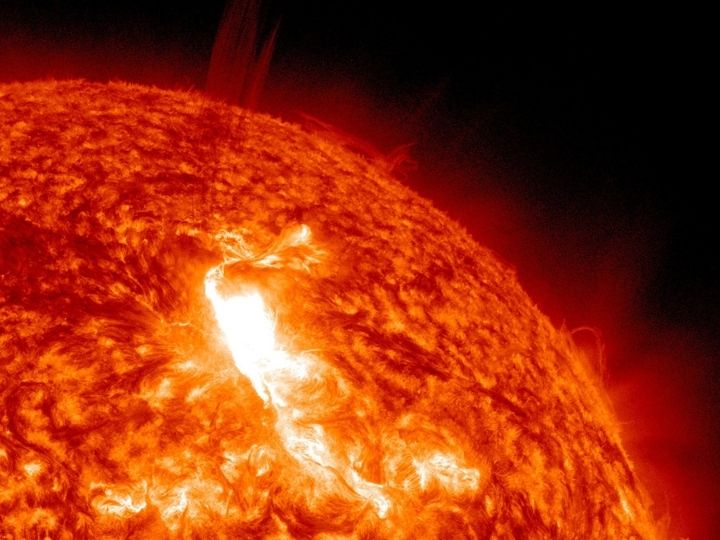
Photo: news.abplive 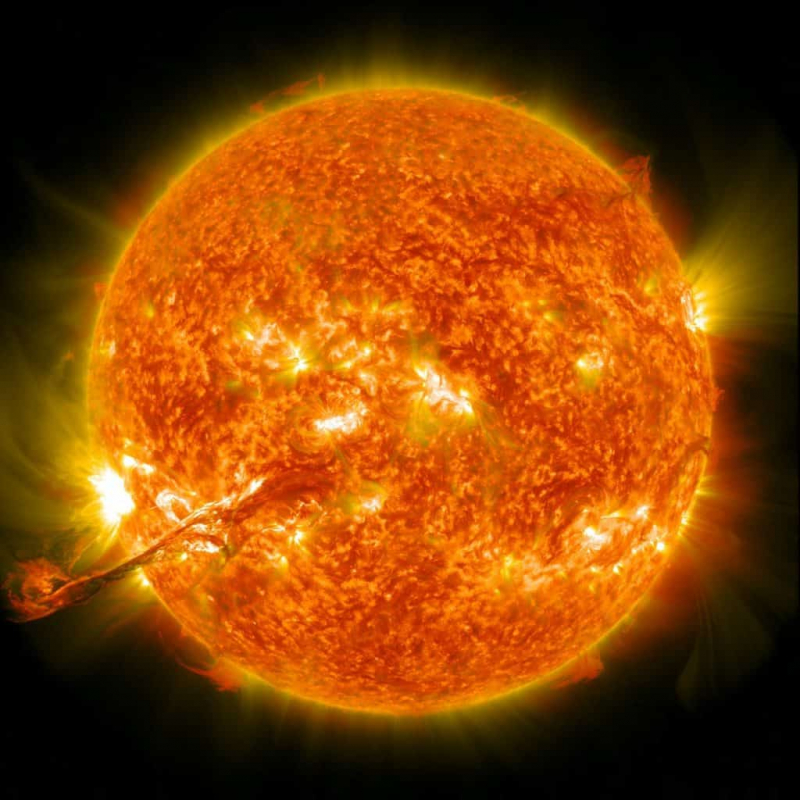
Photo: funkidslive -
Around 4.6 billion years ago, a massive molecular cloud (also known as a nebula) imploded in on itself, creating the solar system. The majority of this cloud's mass was drawn into its center, where it consolidated to form the sun-like star, while the remaining material formed an orbital disk around it. Planets, moons, and other solar system components were created throughout time as a result of the circling disk's mass clumping together.
One of the interesting facts about the Sun is it makes up more than 99.8% of the mass of the solar system and is its largest, hottest, and most massive entity. To fill the volume with the Sun, 1.3 million Earths would be required. The largest planets and the smallest pieces of junk are all in orbit around it thanks to its gravity, which also binds the solar system together. The Sun's core is the hottest region, with temperatures that exceed 27 million degrees Fahrenheit (15 million degrees Celsius).
The Sun exerts an influence on the nature of space across the solar system through its tremendous eruptions and a continuous stream of charged particles. Here is some information about Sun for you know how big Sun
Circumference: Sun 2,713,406 miles (4,366,813 km), Earth 24,901 miles (40,075 km).
Diameter: Sun 900,000 miles (1,392,684 km ), Earth 7,917 miles (12,742 km).
Radius: Sun 432,450 miles (695,500 km), Earth 3,959 miles (6,371 km).
Weight: Sun is 333,000 times heavier than the Earth.
Volume: Sun is more than 1.142 quintillion cubic kilometers, meaning it would hold about 1.3 million Earths.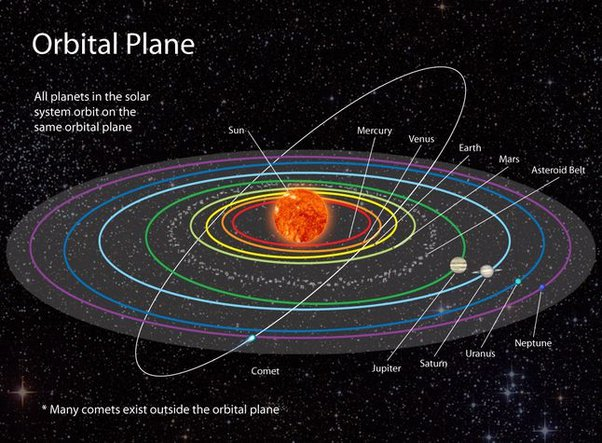
Photo: Quora 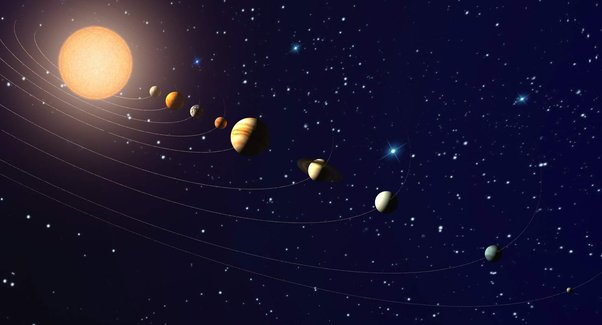
Photo: quora -
The fact that things don't always follow apparent common sense is one of the strange things about space. Consider the sun as an example. Since the surface is closer to the nuclear furnace at the sun's core, one would assume that it would be hotter than the outer atmosphere.
The sun doesn't operate that way, which is the issue. The solar surface, also known as the photosphere, has a temperature that ranges from 6,700 to 11,000 degrees Fahrenheit (3,700 to 6,200 degrees Celsius). However, the atmosphere seems to get hotter the further away you are from the sun's surface. The temperature in the corona, the outermost layer of the atmosphere, surges to an incredible 900,000 degrees Fahrenheit at a distance of around 1,200 miles (2,100 kilometers) from the surface (500,000 degrees Celsius).
Along with the sun, several other stars display this peculiar pattern, and for a very long time, astronomers were baffled as to why. They came up with the theory that magneto hydrodynamic (MHD) waves transport energy directly from below the photosphere to the corona, much like an express train that makes no stops along the way.
In 2013, British researchers explored the chromosphere, the region between the photosphere and the corona, as well as the MHD waves, using advancements in imaging technology. Their calculations showed that the corona might be heated and that energy could be transported there by waves.
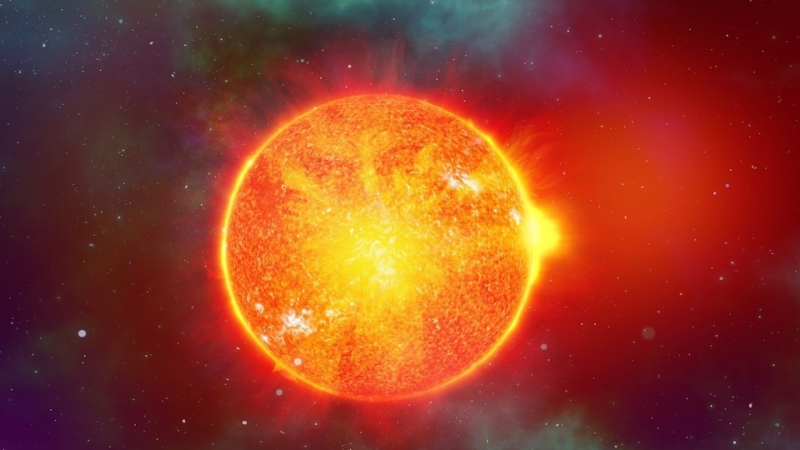
Photo: tech.hindustantimes 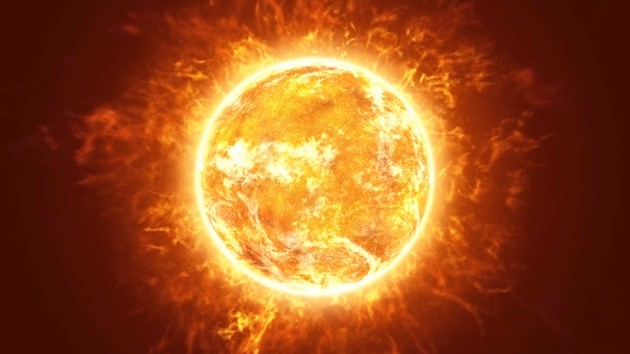
Photo: sciencefocus -
There are various zones and strata in both the sun and its atmosphere. The core, radiative zone, and convection zone make up the solar interior from the inside out. The photosphere, chromosphere, transition region, and corona make up the solar atmosphere above that. The solar wind, a gas discharge from the corona, is located further away.
The core of the sun reaches from its nucleus to around one-fourth of its surface. Even while it only occupies around 2% of the sun's volume, it has a density that is over 15 times that of lead and contains approximately half of the sun's mass. Next is the radiative zone, which spans from the core to 70% of the way to the sun's surface, accounting up 32 % of the sun's volume and 48% of its mass. This zone is where light from the core is scattered, and it can sometimes take a million years for a single photon to pass through.
With a height of up to the sun's surface, the convection zone accounts for 66% of the sun's volume but less than 2% of its mass. This region is dominated by roiling gas "convection cells." Granulation cells, which are roughly 600 miles (1,000 km) broad, and super granulation cells, which have a diameter of 20,000 miles (30,000 km), are the two main types of solar convection cells.
The photosphere, the sun's bottom atmospheric layer, is where the visible light comes from. Although the majority of the light enters through the bottom third, it is just around 300 miles (500 km) thick. The photosphere has a temperature gradient from the bottom, where it is 11,000 F (6,125 C), to the top, where it is 7,460 F (4,125 C). The chromosphere follows, which is hotter, reaching temperatures of up to 35,500 F (19,725 C), and is reportedly comprised entirely spicules, which are spiky structures that are generally 600 miles (1,000 km) across and up to 6,000 miles (10,000 km) high.
Following that is the transition region, which is heated by the corona above it and emits the majority of its light as ultraviolet rays. It is between a few hundred and a few thousand miles thick. The extremely hot corona, which is located at the top, is made up of features like loops and streams of ionized plasma. The corona typically has a temperature range of 900,000 F (500,000 C) to 10.8 million F (6 million C), but when a solar flare occurs, it can even reach tens of millions of degrees. The solar wind expel material from the corona.
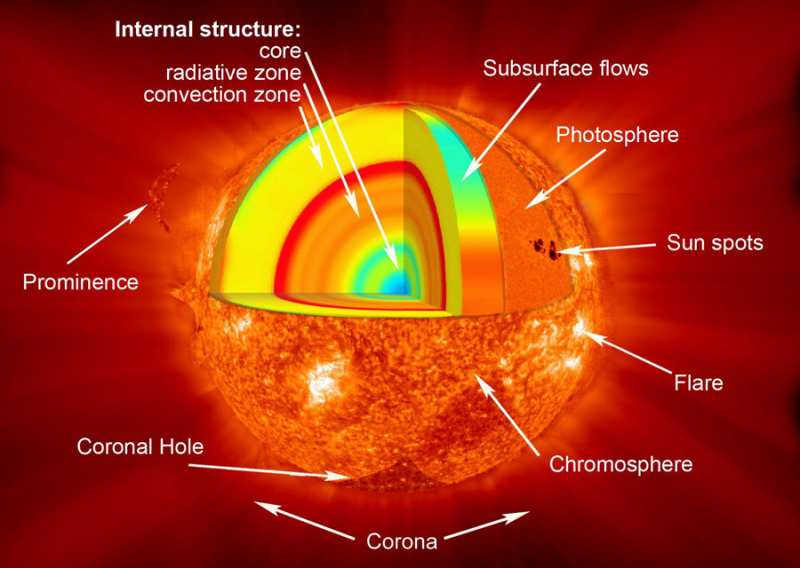
Photo: scied.ucar.edu 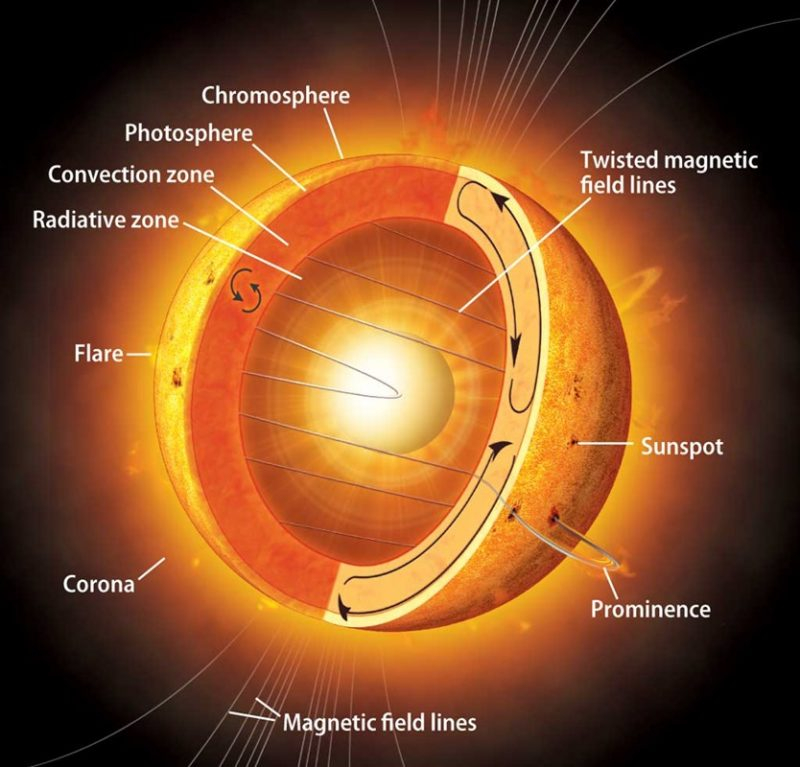
Photo: labarai24 -
Normally, the magnetic field of the sun is only twice as powerful as that of the planet Earth. One of the interesting facts about the Sun is that it can become 3,000 times stronger than usual when it is concentrated in confined spaces. The sun spins more swiftly at the equator than at higher latitudes, and the inner components of the sun rotate faster than the surface, leading to these kinks and twists in the magnetic field.
These distortions produce a variety of phenomena, including sunspots, flares, and coronal mass ejections, spectacular explosions. The solar system's most violent eruptions are flares, whereas coronal mass ejections are less violent but include enormous volumes of matter; one ejection can spew out over 20 billion tons (18 billion metric tons) of material into space. Flares are the most violent eruptions in the solar system.
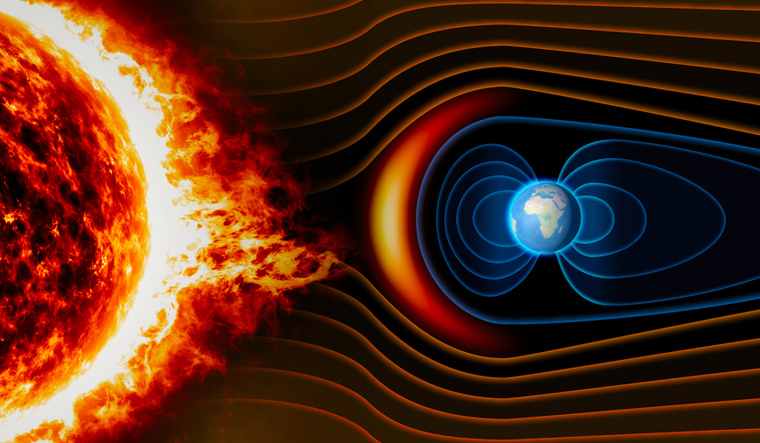
Photo: theweek.in 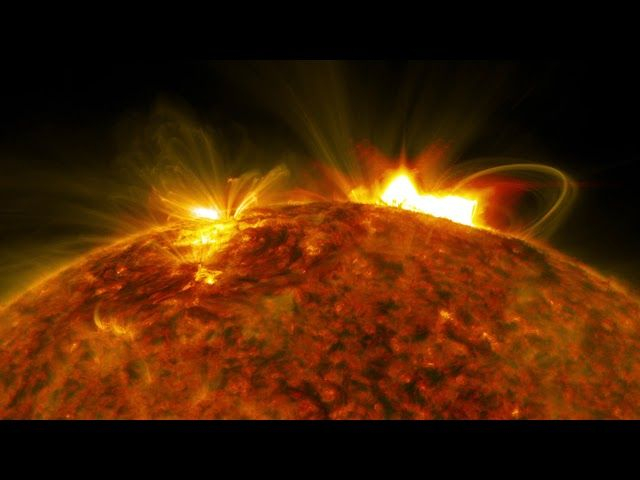
Photo: space -
Through nuclear synthesis, the Sun produces about 386 billion mega Watts of energy when it changes hydrogen into helium. As it moves away from the core, this energy is continuously absorbed and re-emitted at energy levels and temperatures that are lower and lower until it reaches the surface, when some of it emerges as optical light. The energy from the Sun also powers the solar wind, which is a stream of energetic particles that is sometimes radiated as heat.
Numerous spacecraft have been damaged by this wind, which travels across the solar system at a speed of 450 km/sec (280 m/sec), and it has messed with radio and TV reception on Earth. Major power outages have also been brought on by the energetic particles that short circuit power grids by penetrating the insulation of high-tension cables and equipment. As Sun-spot activity is present, the Sun occasionally releases hundreds of millions of tons of material in the form of solar flares, which appear to "explode" when magnetic field lines in the Sun break through the surface.
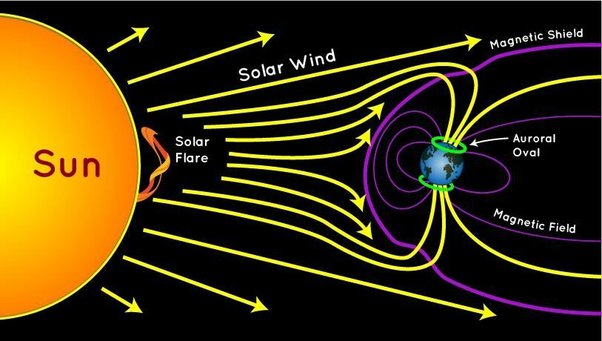
Photo: quora 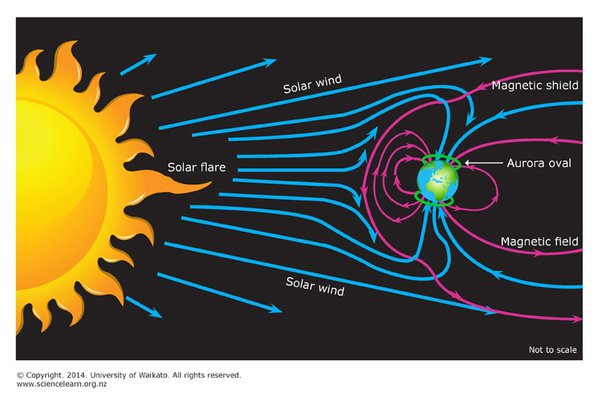
Photo: quora -
The sun, like all stars, produces a variety of electromagnetic radiation. Our eyes can only discern a limited portion of colors, from 380 nm (purple) to 740 nm (red). If you increase the wavelength further, you first enter the realm of infrared light and subsequently reach radio waves.
When the wavelength shortens, ultraviolet light is the first to appear, most of which is absorbed by the atmosphere and leaves us with a tan, followed by X-rays and eventually gamma radiation.
The Sun emits these frequencies at a range of intensities. Additionally, some invisible spectral regions can teach us more about our luminary than visible light does. As a result, many of the space and terrestrial instruments that observe our star do so in "colors" that are beyond the range of the human eye.
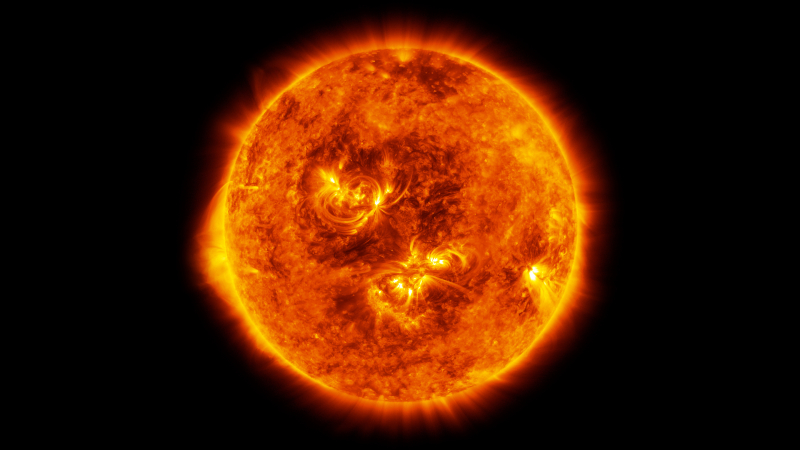
Photo: quantamagazine 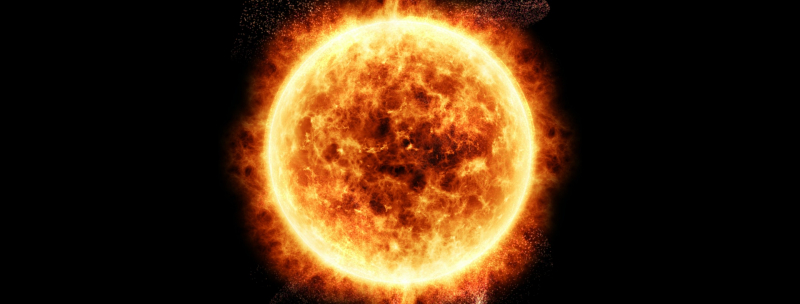
Photo: baamboozle -
A solar eclipse occurs when the Moon lies between the Earth and the Sun and completely or partially blocks the Sun from view over a portion of our planet. Our satellite's orbit is inclined with respect to the ecliptic plane, therefore it occurs two to five times a year rather than once every 29 to 30 days (the length of a full lunar cycle).
When the moon totally blocks out the Sun, we get a total eclipse of the Sun. Additionally, there are annular and partial eclipses. When our natural satellite is in the outermost region of its orbit and its disk is too small to completely encircle the Sun, the latter is viewed.
Total solar eclipses will cease to happen in roughly 600 million years. The Moon will steadily recede from us until it is always visible as being smaller than the Sun. Only annular and partial eclipses will then be visible.
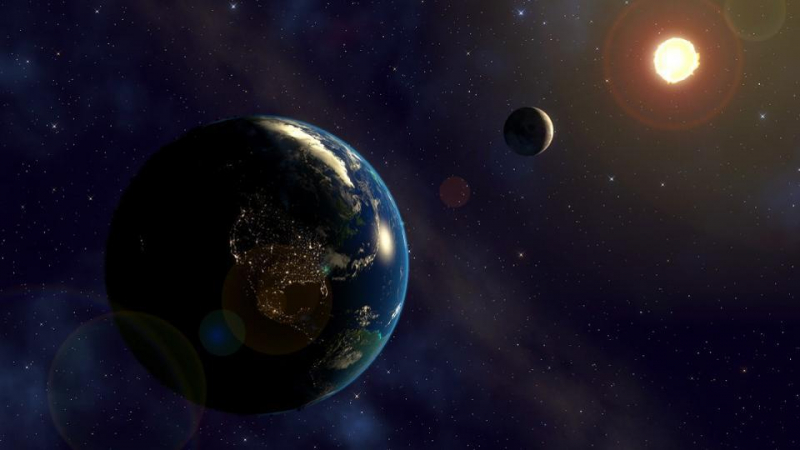
Photo: forbes 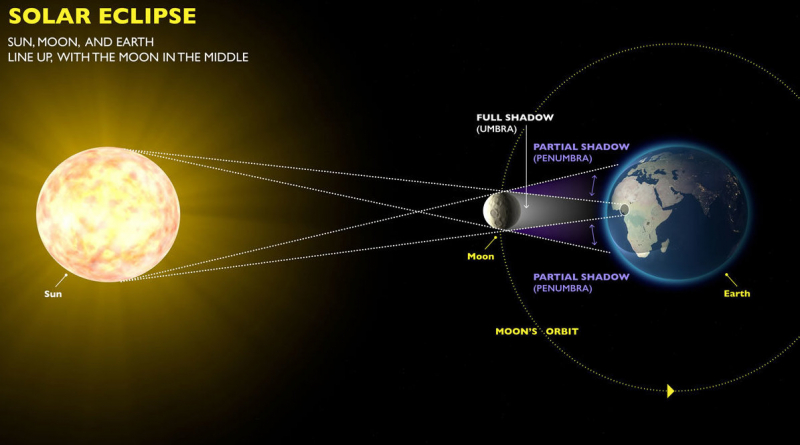
Photo: npr





























